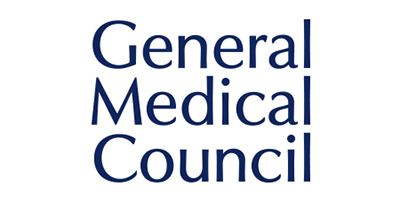Breast Reduction
Breast reduction is the surgical procedure performed to reduce the size of your breasts and to enhance the shape, leaving them more in proportion with your body. Breast size and shape can affect a woman’s well being, self-image, psyche and lifestyle.
The operation is one of the most commonly performed, the results are predictable and the women who have this operation are amongst the most satisfied of any cosmetic procedure. If you are considering a breast reduction operation, the information below should help you understand how it is performed and the results you can expect.
Suitability for Surgery
Ideally you should be near your normal weight for your height when the operation is done. Any woman with large breasts may be a candidate for the operation, especially if your breasts are causing you:
- Neck, back and/or shoulder ache
- A feeling of heavy breasts
- Bra strap grooves in the shoulders
- Rashes underneath the breasts
- Pins and needles in the hands
- Striae (lines) or dilated veins on the breast
A breast reduction operation can improve your self-image, self-confidence and self-esteem. Usually the operation is not performed until a woman’s breasts are fully developed, in other words, from late teens onwards. Very occasionally, marked breast growth can occur in early puberty needing surgery in the teens.
The initial Consultation
At the initial consultation you will tell me about the problems you are having, what you present bra size is and what size breasts you would like. Your goals are very important but should be realistic. i will then exmaine your breasts and measure them. I will discuss the operations that are available and the one that is likely to help you most. You should always remember that there is an option of not having surgery at all.
It is important to identify if you have had breast lumps, nipple discharge, breast pain, breast cancer and any other breast surgery You should also inform me if you have any family history of breast cancer, particularly in close relstives.
I will ask you about long-term medication, allergies, and bleeding tendencies, as well as any problems with local or general anaesthesia. I will ask you about your smoking history and whether you have had any mental health issues. Photographs will be taken and a BMI measurement made.
The Surgery
The most usual technique removes tissue from the lower part of the breast and raises the nipple to a premeasured height. This leaves an anchor shaped scar made up of a scar around the nipple, a vertical line down to the chest and a horizontal line under the breast. There are other techniques which leave fewer scars and can be discussed.
The results are likely to help for upto 10 years, but ageing and weight changes will affect the results as will future pregnancies.
The Risks
When performed by a qualified surgeon, breast reduction is safe and the vast majority of women are very pleased with their results. Nevertheless, surgery carries risks which are listed below.
Bleeding and bruising after the surgery can occur, which can rarely require a return to theatre to remove it.
Seroma is a build up of clear fluid coming from the underlying muscle.
Wound breakdown is a possibility and will usually occur where the vertical wound meets the horizontal one.
Infection can happen but it usually occurs 7-10 days after surgery.
Wounds may be slow to heal and part of the breast can skin die and may need dressings.
The Nipple can partly or fully die, but this is very unusual and reconstruction may be requested by the patient.
Breast feeding. You may not be able to breast feed afterwards
Sensation in the nipples may be altered becoming very sensitive but more often they become less sensitive.
Scars may become thickened or widened and treatment is available to help with this.
Shape, size and symmetry The breast may not be the same size and the shape and final size cannot be guarenteed.
Numbness The breast may feel numb, but this should improve over the next few weeks and is rarely permanent.
Dogears Sometimes there can be a fullness at the ends of the wounds known as dogears- these usually settle with time.
About half the women will have minor complication, but 85% are delighted with the result.
Preparation for surgery.
Your BMI should be less than 30 and you should mentally and physically fit. You should stop smoking 6 weeks before surgery and can start again when the wounds have healed at 2-4 weeks. Please do not take aspirin, naproxen for 10 days before surgery. You should have a shower the night before or the day of surgery. I will have emailed you a consent form, which you should print, read and sign and date the bottom of each page and bring the full document with you on the day of surgery , so that we can sign the last page together.
What to bring with you
Toiletries , and regular medications and dont forget the sports bra. You should have bought 2, so that one can be washed and the size that you would like to be after surgery. These can either be bought from a sports shop or from MACOM online, but ensure they are the right size before ordering, https://www.macom-medical.com/
The Day of Surgery
On the ward before surgery, I will measure and draw the incision lines on your breasts and where the new nipple will be on the breast. Surgery will be done under a general anaesthetic. You should bring with you a sports bra to be put on after the surgery is completed. After surgery, you will have dressings and a drain in each breast and will spend 1-2 nights in hospital. The drains after removed before going home.
Recovery period
Please keep the dressings in place and we will arrange a wound check at 1 week with the hospital nurses and i will see you at 2 weeks, to remove the dressings and advise about scar care.
Recovery may take to 2-4 weeks and you should not to return to work for the 1-2 weeks after surgery depending on your work. You should not fly for 6 weeks after surgery.
It is advisable to make arrangements for help at home during your convalescence, which should be at least the first fortnight, especially if you have young children.
The Results
It will take 6-12 months to see the final results and these may last for 10 years. This longevity however can not be guarenteed and is dependent on skin quality, change of weight, pregnancy and smoking.
If you are worried post operatively
Please call the hospital ward you were on or Jan Richards 07722841078 9am-2pm monday-friday.
In an emergency, you may need to seek advice or attend your local hospital Accident and Emergency department.
Appointments
These can be made directly through the hospitals, via my PA Jan Richards or completing the form in the 'Contact' link above.






